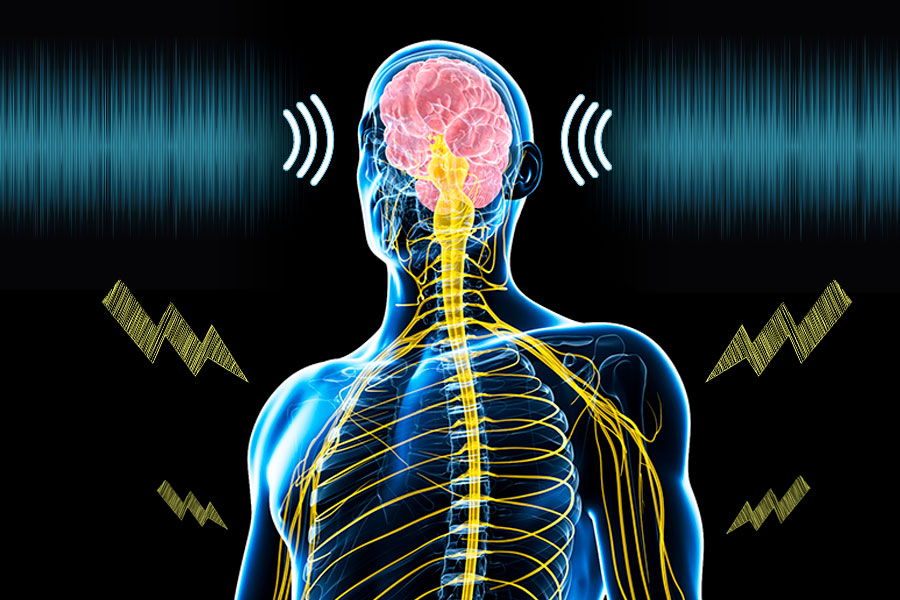Study finds that sound plus electrical body stimulation has potential to treat chronic pain

A University of Minnesota Twin Cities-led team has found that electrical stimulation of the body combined with sound activates the brain’s somatosensory or “tactile” cortex, increasing the potential for using the technique to treat chronic pain and other sensory disorders. The researchers tested the non-invasive technique on animals and are planning clinical trials on humans in the near future.
During the study, published in the Journal of Neural Engineering, the researchers played broadband sound while electrically stimulating different parts of the body in guinea pigs. They found that the combination of the two activated neurons in the brain’s somatosensory cortex, which is responsible for touch and pain sensations throughout the body.
While the researchers used needle stimulation in their experiments, one could achieve similar results using electrical stimulation devices, such as transcutaneous electrical nerve stimulation (TENS) units, which are widely available. The researchers hope that their findings will lead to a treatment for chronic pain that’s safer and more accessible than drug approaches.
“Chronic pain is a huge issue for a lot of people, and for most, it's not sufficiently treatable,” said Cory Gloeckner, lead author on the paper, a Ph.D. alumnus of the U of M Department of Biomedical Engineering and an assistant professor at John Carroll University. “Right now, one of the ways that we try to treat pain is opioids, and we all know that doesn't work out well for many people. This, on the other hand, is a non-invasive, simple application. It’s not some expensive medical device that you have to buy in order to treat your pain. It's something that we think would be available to pretty much anyone because of its low cost and simplicity.”
The researchers plan to continue investigating this “multimodal” approach to treating different neurological conditions, potentially integrating music therapy in the future to see how they can further modify the somatosensory cortex.
“A lot of people have been using acupuncture or electrical stimulation—non-invasive or invasive—to try to alter brain activity for pain,” said Hubert Lim, senior author on the paper and a professor in the U of M Department of Biomedical Engineering and Department of Otolaryngology. “Our research shows that when you combine this with sound, the brain lights up even more.”
Lim said this opens up a whole new field of using this bimodal and multimodal stimulation for treating diseases.
The research was funded by the National Science Foundation, the Lions Hearing Foundation, the University of Minnesota Interdisciplinary Fellowship and University of Minnesota Lab Startup Funds.
-30-
About the College of Science and Engineering
The University of Minnesota College of Science and Engineering brings together the University’s programs in engineering, physical sciences, mathematics and computer science into one college. The college is ranked among the top academic programs in the country and includes 12 academic departments offering a wide range of degree programs at the baccalaureate, master's, and doctoral levels. Learn more at cse.umn.edu.
- Categories:
- Science and Technology
- Health conditions
- Science





